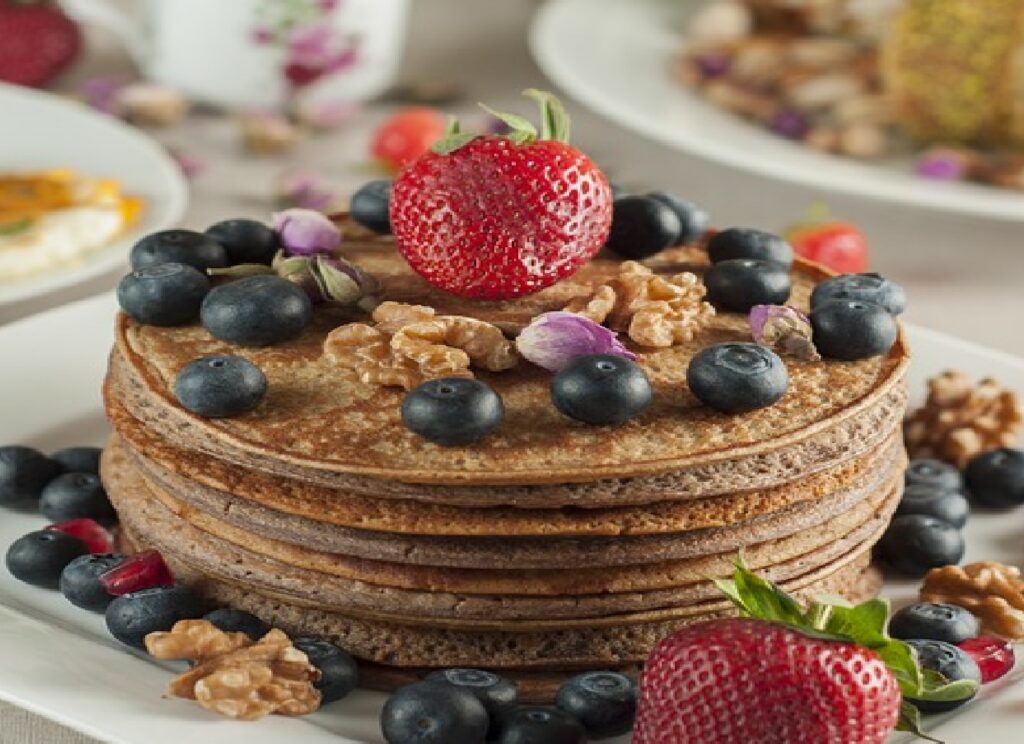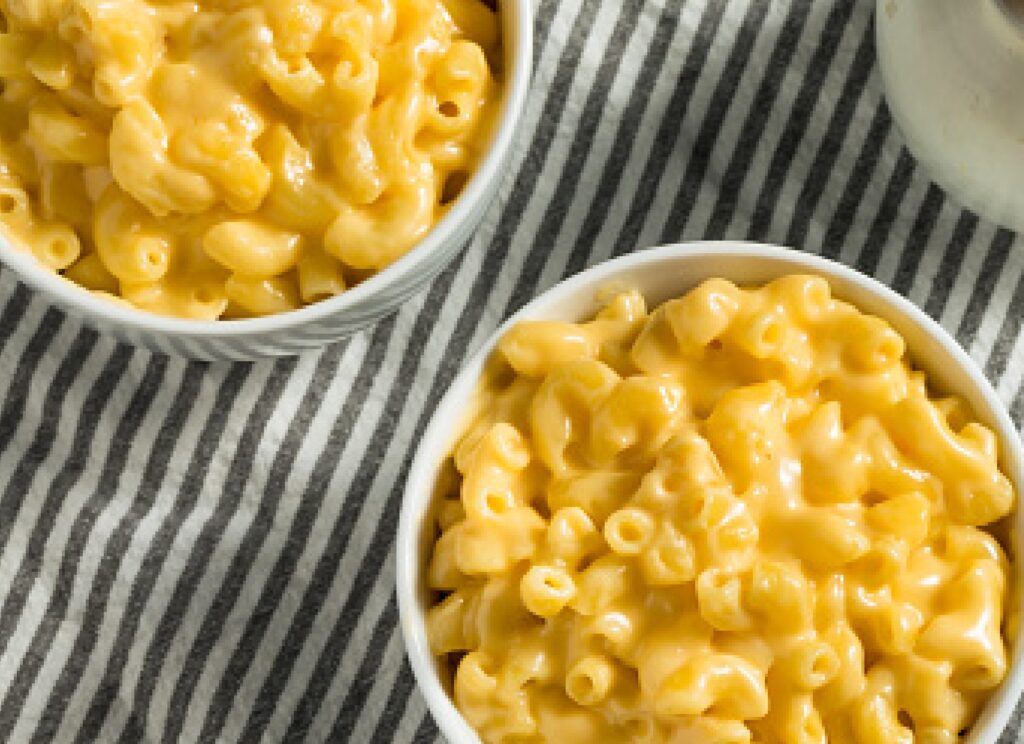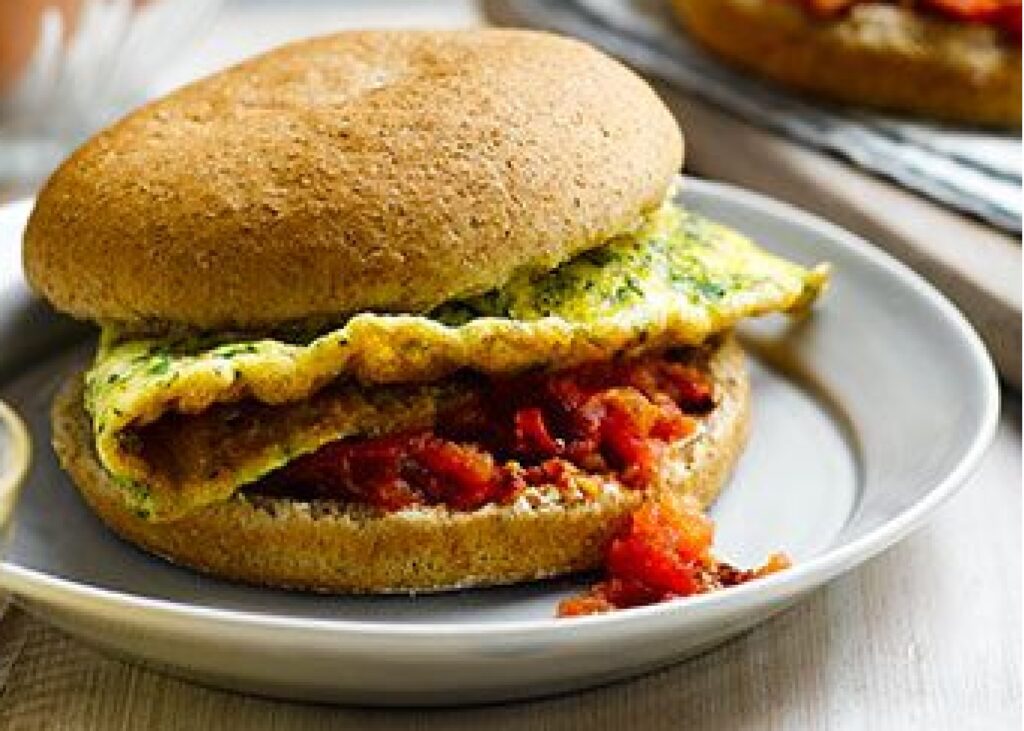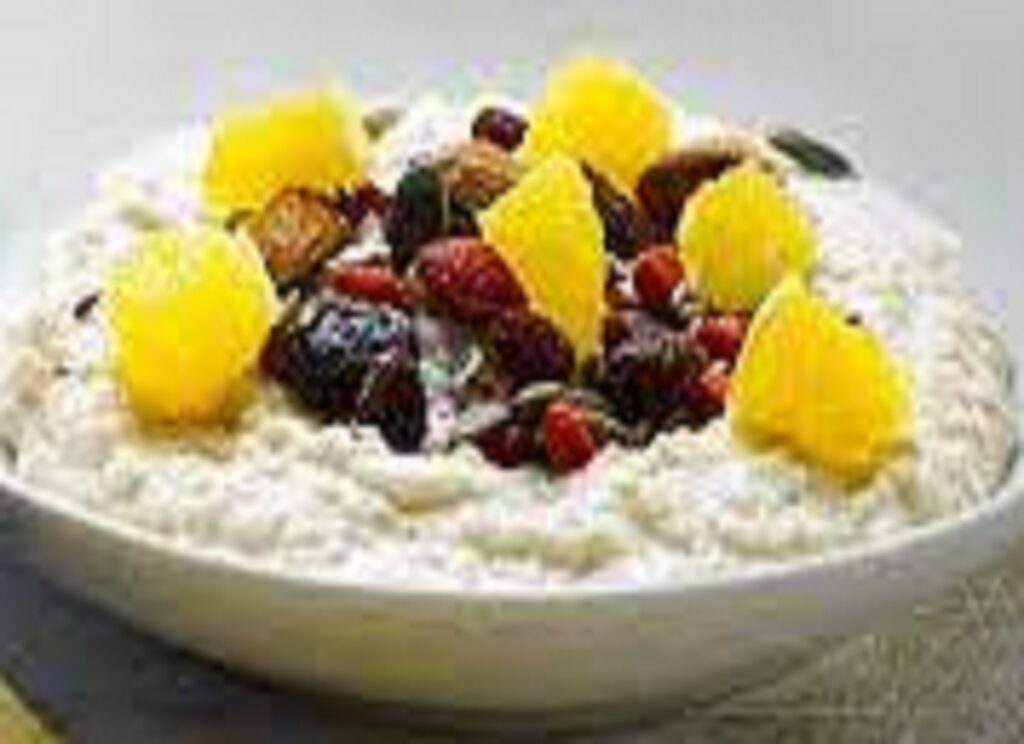This pancake recipe is so good, you’ll never go back to regular pancakes again! These crepe pancakes are light and fluffy, and can be customized with any toppings you like.
The ultimate guide to making perfect crepe pancakes every time
Pancakes are one of my all-time favorite breakfast foods. They’re simple to make, delicious, and versatile. You can top them with fruit, chocolate, or even just some butter and syrup.
I love pancakes because they’re a great way to start the day. They’re filling but not too heavy, and they give me the energy I need to get through the morning. I also love how easy they are to make. All you need is a bowl, a whisk, and a frying pan, and you’re good to go.
If you’re looking for a delicious pancake recipe, I highly recommend this crepe recipe. It’s easy to follow and yields light, fluffy pancakes that are perfect for topping with your favorite fruits or spreads. Give it a try, and I’m sure you’ll be a pancake convert like me!
Recipe Instruction:
- Put 100g plain flour and a pinch of salt into a large mixing bowl.
- Make a well in the centre and crack 2 eggs into the middle.
- Pour in about 50ml from the 300ml of semi-skimmed milk and 1 tbsp sunflower oil then start whisking from the centre, gradually drawing the flour into the eggs, milk and oil.
- Once all the flour is incorporated, beat until you have a smooth, thick paste.
- Add a little more milk if it is too stiff to beat.
- Add a good splash of milk and whisk to loosen the thick batter.
- While still whisking, pour in a steady stream of the remaining milk.
- Continue pouring and whisking until you have a batter that is the consistency of slightly thick single cream.
- Heat the pan over a moderate heat, then wipe it with oiled kitchen paper.
- Ladle some batter into the pan, tilting the pan to move the mixture around for a thin and even layer.
- Quickly pour any excess batter into the mixing bowl, return the pan to the heat.
- Leave to cook, undisturbed, for about 30 secs.
- If the pan is the right temperature, the pancake should turn golden underneath after about 30 secs and will be ready to turn.
- Hold the pan handle, ease a palette knife under the pancake, then quickly lift and flip it over.
- Make sure the pancake is lying flat against the base of the pan with no folds, then cook for another 30 secs before turning out onto a warm plate.
- Continue with the rest of the batter, serving them as you cook or stack onto a plate.
- You can freeze the pancakes for 1 month, wrapped in cling film or make them up to a day ahead.
These pancake variations will have you coming back for seconds!
There are many ways to change up your pancake recipe and make delicious crepes! Here are a few variations you can try:
- Add some fruit to your crepes for a sweet and healthy twist. Try adding bananas, berries, or even diced apples.
- For a savory crepe, add some cooked bacon, ham, or sausage. You can also add shredded cheese, diced onions, or green peppers.
- Make a breakfast crepe by adding a fried egg, some breakfast sausage, and shredded cheese.
- Turn your crepe into a dessert by adding chocolate chips, whipped cream, or a drizzle of honey.
There are endless possibilities when it comes to crepes, so get creative and experiment with your favorite ingredients!
Is crepe batter the same as pancake?
Are crepe batter and pancake batter the same? The answer is no. Although both are made with flour, eggs, and milk, the proportions are different and crepe batter is usually thinner. This results in a thinner and more delicate crepe that is often served rolled up with a sweet filling. Pancake batter, on the other hand, is thicker and results in a fluffier pancake.
Is crepes made from pancake mix?
The short answer is no, crepes are not made from pancake mix. Pancake mix is made from a combination of flour, baking powder, salt, and sugar, while crepes are made from a combination of flour, eggs, milk, and butter. The difference in ingredients results in a difference in texture and flavor, with crepes being thinner and more delicate than pancakes.
What is the secret of a good crepe?
There is no one answer to this question as everyone has their own preferences when it comes to crepes. However, there are a few tips that can help you make a delicious and enjoyable crepe.
Firstly, make sure that your crepe batter is the right consistency. It should be smooth and runny enough to spread evenly across the pan, but not too thin or watery.
Secondly, heat your pan properly before you begin cooking the crepes. The pan should be hot enough that the crepes cook quickly and evenly, but not so hot that they burn.
Finally, don’t be afraid to experiment with different fillings and toppings. A good crepe is only as good as its contents, so try out different combinations until you find your perfect recipe.
What flour are crepes made of?
There are a variety of flours that can be used to make crepes, but the most common flour used is wheat flour. Other flours that can be used include buckwheat flour, rice flour, and gluten-free flour.
The type of flour used will affect the texture and flavor of the crepes. For example, wheat flour will give the crepes a chewy texture, while buckwheat flour will give them a crispy texture.
If you are making gluten-free crepes, be sure to use a gluten-free flour blend. Rice flour is a good option for gluten-free crepes, as it gives them a light and fluffy texture.
Pancake crepe recipe
Course: Breakfast, Cake, PancakesDifficulty: Easy2
servings10
minutes10
minutes198
kcalIngredients
100g plain flour
2 large eggs
300ml semi-skimmed milk
1 tbsp sunflower oil ( or butter if you prefer)
A pinch of salt
Directions
- Put 100g plain flour and a pinch of salt into a large mixing bowl.
- Make a well in the centre and crack 2 eggs into the middle.
- Pour in about 50ml from the 300ml of semi-skimmed milk and 1 tbsp sunflower oil then start whisking from the centre, gradually drawing the flour into the eggs, milk and oil.
- Once all the flour is incorporated, beat until you have a smooth, thick paste.
- Add a little more milk if it is too stiff to beat.
- Add a good splash of milk and whisk to loosen the thick batter.
- While still whisking, pour in a steady stream of the remaining milk.
- Continue pouring and whisking until you have a batter that is the consistency of slightly thick single cream.
- Heat the pan over a moderate heat, then wipe it with oiled kitchen paper.
- Ladle some batter into the pan, tilting the pan to move the mixture around for a thin and even layer.
- Quickly pour any excess batter into the mixing bowl, return the pan to the heat.
- Leave to cook, undisturbed, for about 30 secs.
- If the pan is the right temperature, the pancake should turn golden underneath after about 30 secs and will be ready to turn.
- Hold the pan handle, ease a palette knife under the pancake, then quickly lift and flip it over.
- Make sure the pancake is lying flat against the base of the pan with no folds, then cook for another 30 secs before turning out onto a warm plate.
- Continue with the rest of the batter, serving them as you cook or stack onto a plate.




